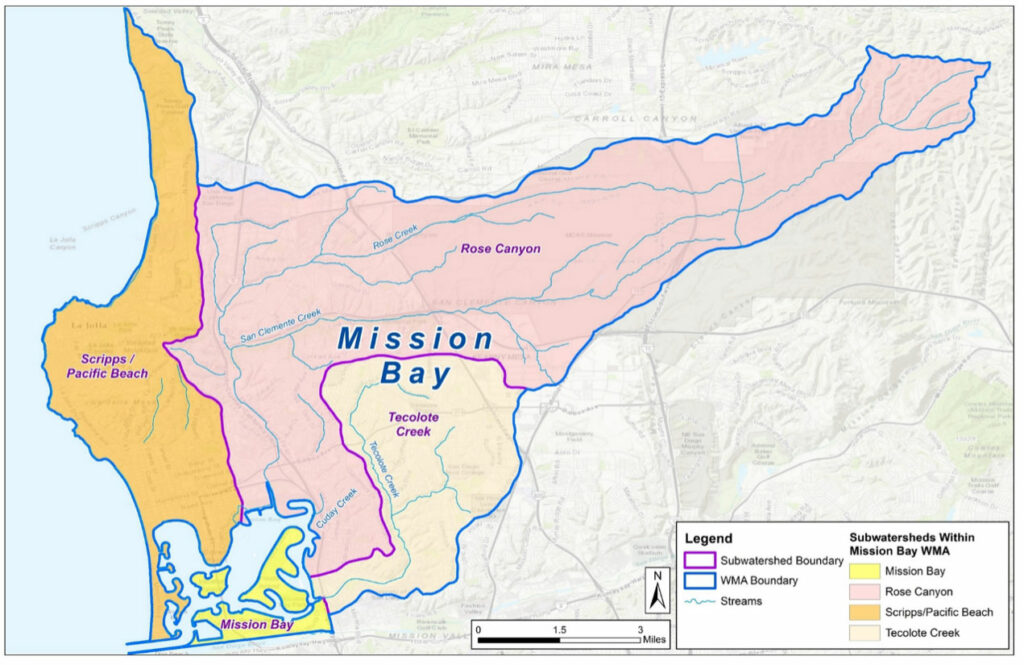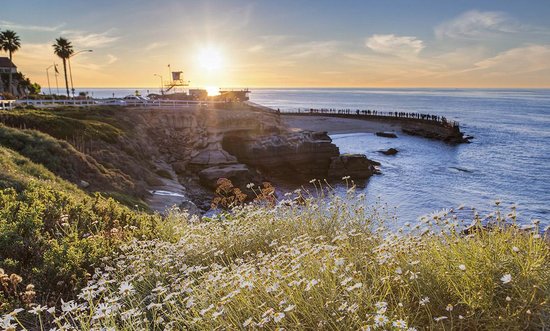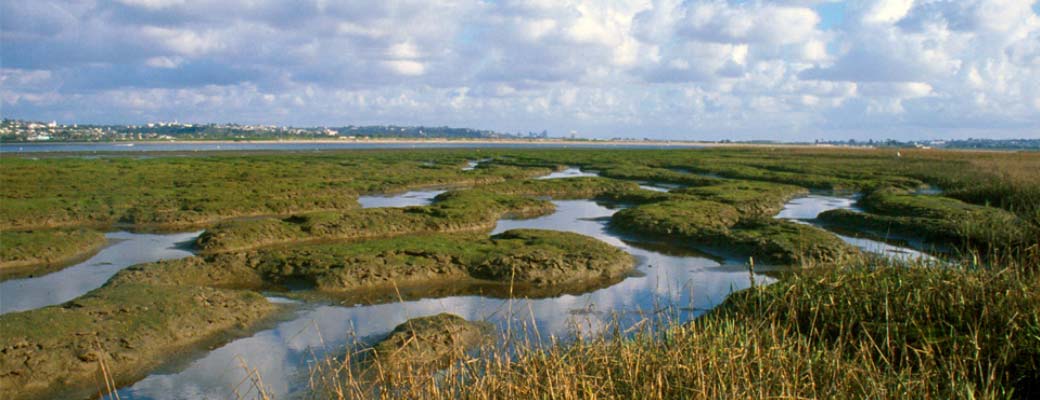Overview

The Mission Bay Watershed Management Area (WMA) drains a highly urbanized, 64-square-mile area of the San Diego Basin in the center of coastal San Diego County. For the Mission Bay Water Quality Improvement Plan (WQIP), the WMA was divided into four subwatersheds: Mission Bay, Scripps/Pacific Beach, Rose Canyon, and Tecolote Creek. The Mission Bay WMA encompasses 64 square miles of highly urban land and extends from Interstate 15 in the east to Interstate 8 in the south, and Torrey Pines State Reserve to the north. The City of San Diego is the Copermittee with jurisdiction over the Mission Bay Watershed. In 2016, the San Diego Regional Board approved the WQIP to protect and preserve water quality from the impact of storm water discharges in the Mission Bay Watershed. The WQIP identifies priority and highest priority water quality conditions, goals for their improvement, strategies to meet the goals, monitoring to track progress, and an adaptive management framework.
The City is the MS4 Permit Responsible Agency within the Mission Bay WMA. The California Department of Transportation (Caltrans) is voluntarily participating in the WQIP process across the San Diego region because it has partial responsibility for the implementation of the Ms4 permit.
The WMA can be divided into three distinct hydrological areas, each with unique geological and environmental features:
- Scripps (906.3)
- Miramar (906.4)
- Tecolote (906.5)
Rainfall to the area primarily drains through Rose and Tecolote Creeks, each of which discharges into Mission Bay before the water is subsequently directed into the Pacific Ocean. Cudahy Creek is another tributary crucial to the WMA.
Currently, about thirty-seven percent (37%) of the WMA remains undeveloped or has otherwise been dedicated to open space and recreational lands. The remaining sixty-three percent (63%) of the land area is being utilized as residential areas (28%), roadways and transportation (16%), office and institutional lands (7%), and other (12%). The remaining ‘other’ twelve percent (12%) includes industrial, commercial, and agricultural land uses.
The Mission Bay WMA is estimated to be home to approximately 232,000 residents, according to 2010 U.S. Census data. Given its dense population, the watershed suffers from several human-induced pollutants, which have the potential to negatively impact how residents, business-owners, and tourists use and interact with local water bodies. It is important to note, however, that the watershed serves more than just humans.
The Mission Bay WMA consists of a variety of unique and diverse ecosystems that also act as critical habitat for a number of endangered species.
For more information about water bodies see the San Diego Basin Plan, which provides information on uses of water bodies and water quality objectives, beneficial uses and the 303(d) list, which identifies water body segments not meeting water quality standards.
Water Quality Improvement Plan (WQIP)
Agencies involved in the development of the Mission Bay Water Quality Improvement Plan (WQIP) include the City of San Diego and the California Department of Transportation. The WQIP is a requirement of updated stormwater regulations adopted by the Regional Water Quality Control Board (Regional Board) according to Order No. R9-2013-0001, as amended by Order Nos. R9 2015-0001 and R9-2015-0100. The ultimate goal of the WQIP is to protect, preserve, enhance, and restore water quality of receiving water bodies. These improvements in water quality will be accomplished through an adaptive planning and management process that identifies the highest priority water quality conditions within the watershed and implements strategies to address them.
The Mission Bay Water Quality Improvement Plan(WQIP) was originally submitted to the Regional Board on June 26, 2015, as required by the Municipal Permit. The WQIP was subsequently revised and resubmitted in order to incorporate comments received from the public and the Regional Board. Following further comments, the Regional Board issued an acceptance letter for the Mission Bay/La Jolla WQIP on February 12, 2016. The resulting WQIP, appendices, and acceptance letter are available at the links above.
WQIP Annual Reports
The Mission Bay Water Management Area (WMA) Water Quality Improvement Plan (WQIP) Annual Reports allow copermittees to demonstrate progress made during the fiscal year towards achieving water quality goals. They are a direct requirement of the National Pollutant Discharge Elimination System (NPDES) Permit, Order No. R9-2013-0001, as amended by Order Nos. R9-2015-0001 and R9-2015-0100. The Annual Reports contain specific information regarding strategy implementation and monitoring efforts and data. Furthermore, they serve as a basis upon which copermittees may choose to adaptively manage their highest priorities and goals/strategies, according to the most recent water quality data.
For most San Diego Region watersheds, FY 2015-16 is the first year of WQIP implementation and is therefore the first year of annual reporting. Annual reports are submitted to the Regional Board by January 31 of the following year.
Below are the most recent annual reports, to view years prior to 2015-2016 click here.
Juridictional Runoff Management Plans
The Regional Stormwater Permit (Order No. R9-2013-0001, as amended by Order Nos. R9-2015-0001 and R9-2015-0100) requires that the San Diego Region Copermittees provide access to their Jurisdictional Runoff Management Program documents on a Regional Clearinghouse website. The purpose of JRMP documents are to guide implementation of programs and strategies to reduce pollutants discharged from each Copermittee’s storm drain system to receiving waters. The JRMPs for each Copermittee involved in the Mission Bay / La Jolla WMA are linked to below.
BMP Design Manuals
The Regional Stormwater Permit (Order No. R9-2013-0001, as amended by Order Nos. R9-2015-0001 and R9-2015-0100) requires that the San Diego Region Copermittees provide access to their BMP Design Manuals and associated documents on a Regional Clearinghouse website.
The BMP Design Manuals for each Copermittee involved in the Mission Bay WMA are linked to below:
Model BMP Design Manual
The San Diego County Copermittees developed a Model BMP Design Manual for the San Diego Region in order to conform to updated development requirements of the 2013 Municipal Storm Water Permit (Order No. R9-2013-0001, as amended by Order Nos. R9-2015-0001 and R0-2015-0100). The Model BMP Design Manual provides procedures for planning, selecting and designing onsite structural BMPs for new development and significant redevelopment projects in accordance with the 2013 Municipal Permit. Additionally, the Regional Manual provides a basis for the development of local BMP Design Manuals by each Stormwater Copermittee in the San Diego region.
Each Copermittee was required to update its local BMP Design Manual in accordance with the content of the regional model on or before the February 16, 2016 deadline outlined in the 2013 Permit.
The final model BMP Design Manual, its appendices, and associated materials can be retrieved here:
Other Plans and Projects
Additional plans and projects not necessarily associated with the Water Quality Improvement Plan (WQIP) are listed below.
Transitional Monitoring and Assessment Program Report (TMAR)
A requirement of the Municipal Permit Order No. 2013-0001 (as amended in Order Nos. R9-2015-0001 and R9-2015-0100), transitional monitoring was conducted and reported on prior to development of the Mission Bay / La Jolla WQIP. The reports, appendices, and associated documents can be found below:
Things To Consider
When excessive quantities of pollutants are deposited into these water bodies, they may inhibit many or all of these beneficial uses, which can result in actions such as beach closures and postings, etc. Urban runoff, sewage spills, dredging, and landfill leachate are considered the major sources impacting the above beneficial uses in the Mission Bay WMA.
Under Section 303(d) of the Clean Water Act, Tecolote Creek and the Pacific Ocean Shoreline were identified as impaired for coliform bacteria, which is required to be addressed through a number of best management practices and regular monitoring. As such, copermittees (also referred to as Responsible Agencies (RAs)) focus their treatment and cleanup efforts on this particular water quality condition.
Copermittees are required to develop a comprehensive Water Quality Improvement Plan (WQIP) for the WMA that identifies highest priority water quality conditions, strategies to address them, and monitoring plans. The WQIP and associated Annual Reports are required by Order No. R9-2013-0001 as amended by Order Nos. R9-2015-0001 and R9-2015-0100 and pertain specifically to improving the quality of both storm water and non-storm water discharged by copermittees’ municipal separate storm sewer systems (MS4s).
In the Mission Bay WMA, the City of San Diego is the sole permittee; however, the City collaborates with Caltrans in implementing the WQIP. The final WQIP for the Mission Bay WMA was submitted to the Regional Water Quality Control Board and was accepted in February 2016. The City of San Diego has chosen to focus their treatment and cleanup efforts on indicator bacteria in Tecolote Creek and the Pacific Ocean Shoreline, conditions which has been classified as the highest priority water quality condition.
Hydrologic Area (HA) Descriptions
To develop the Water Quality Improvement Plan, the Mission Bay WMA was separated into four main subwatersheds: Rose Canyon, Tecolote Creek, Mission Bay, and Scripps. Rose Creek, Tecolote Creek, and Cudahy Creek are the WMA’s main tributaries to Mission Bay. San Clemente Creek and Cudahy Creek are tributaries to Rose Creek, and are considered part of the Rose Canyon subwatershed. The Mission Bay subwatershed comprises Vacation Isle and Fiesta Island areas, which are smaller, separate drainage areas within Mission Bay. The Scripps subwatershed is unique in that it has two separate drainage ways. The “Crown Point” area and the eastern portion of the Mission Beach community drain into Mission Bay. The remaining portion of the Scripps subwatershed drains into the Pacific Ocean.

La Jolla Cove – https://media-cdn.tripadvisor.com/media/photo-s/06/d7/dc/b3/bigphotoforla-jolla.jpg

Kendall-Frost Mission Bay Marsh Preserve – http://nrs.ucsd.edu/_images/homepage-rotator/kendall.png

Tecolote Canyon Natural Park – http://s3-media3.fl.yelpcdn.com/bphoto/HiZu-eNwlejuF02wXdkkJQ/o.jpg